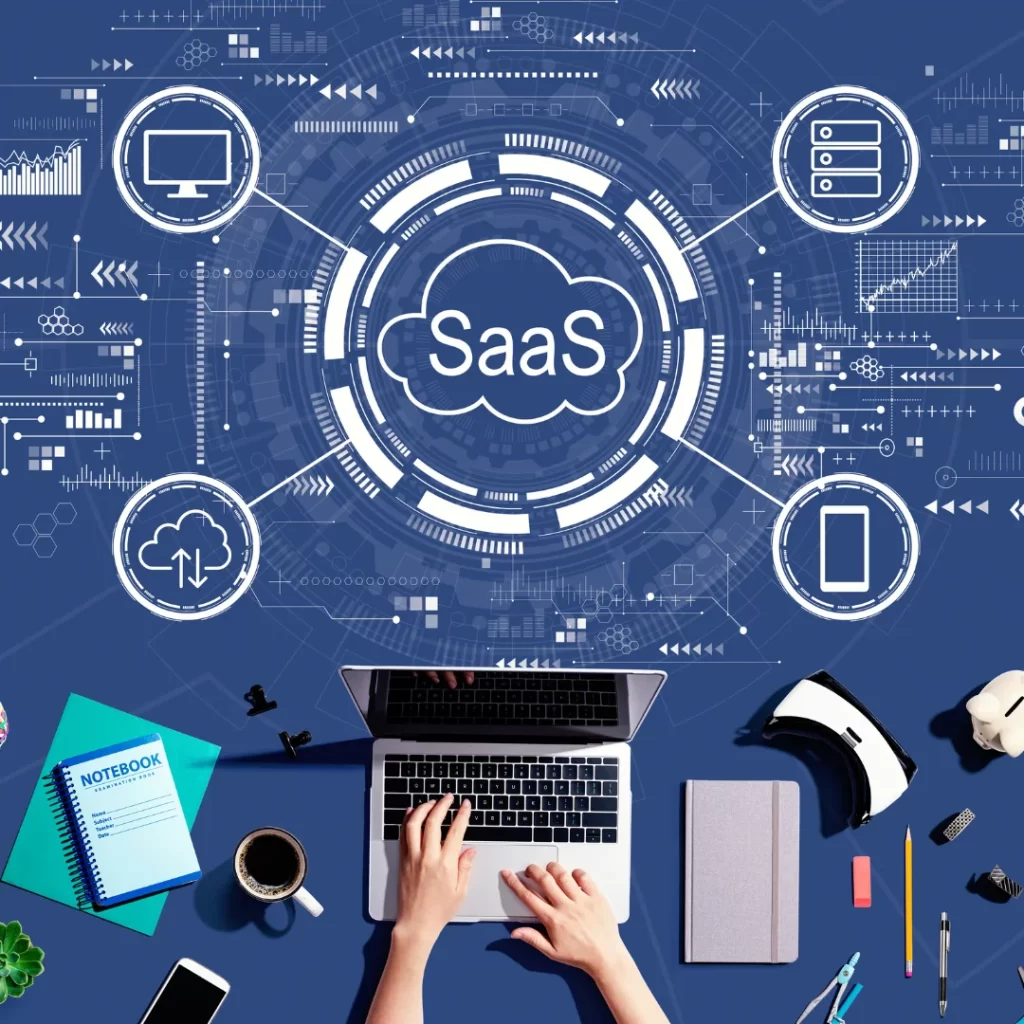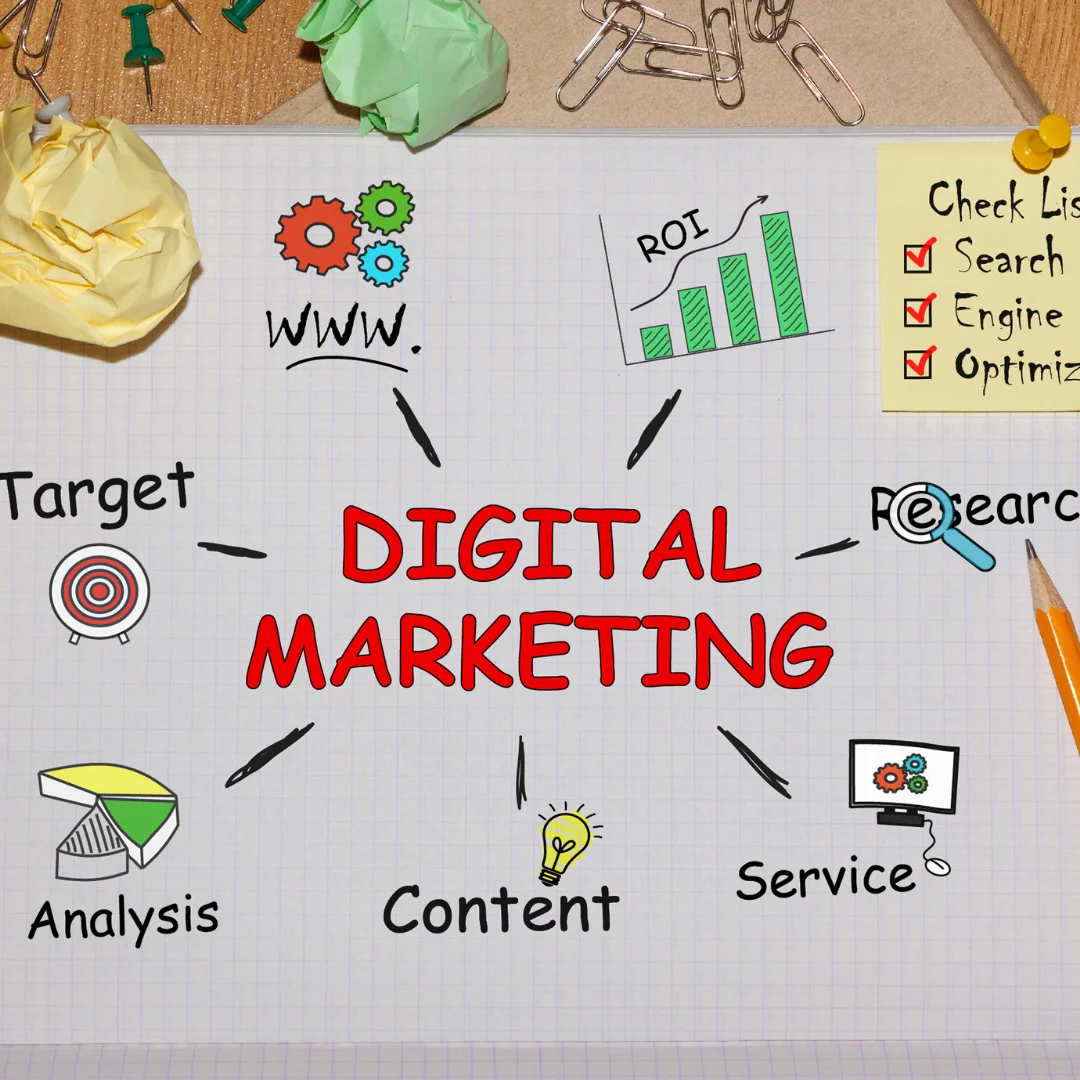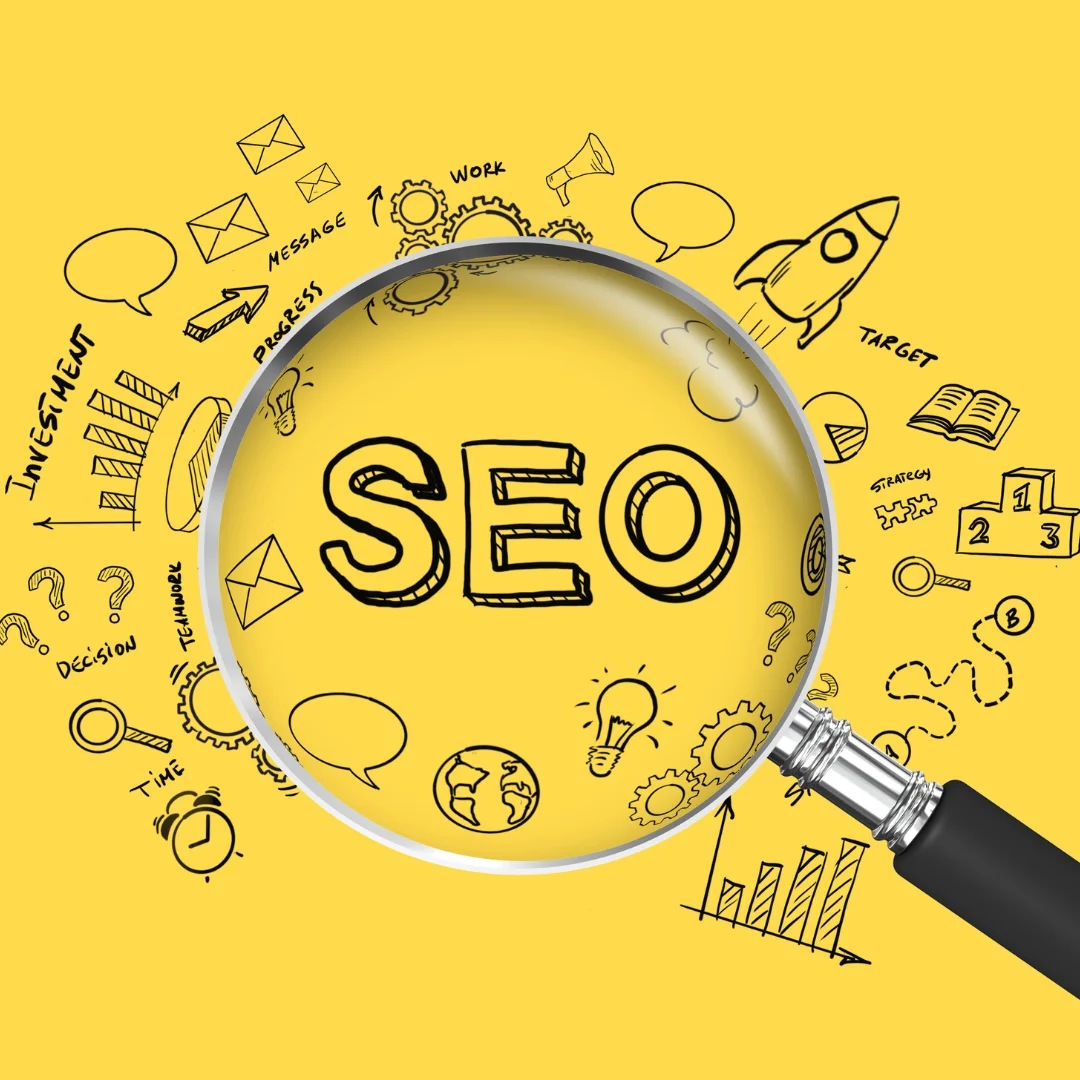Software as a Service (SaaS) is not just a fancy buzzword anymore—it’s the lifeblood of modern businesses. By 2025, the SaaS market is projected to hit a staggering $700 billion, driven by businesses of all sizes migrating to cloud-based solutions. But here’s the twist: creating a SaaS product is one thing; marketing it is a whole new beast. And no, shouting “We have an app for that!” into the void doesn’t cut it anymore.
This guide will break down everything you need to know about SaaS marketing in 2025. Grab a coffee (or something stronger)—this one’s worth the read.
Understanding SaaS Marketing
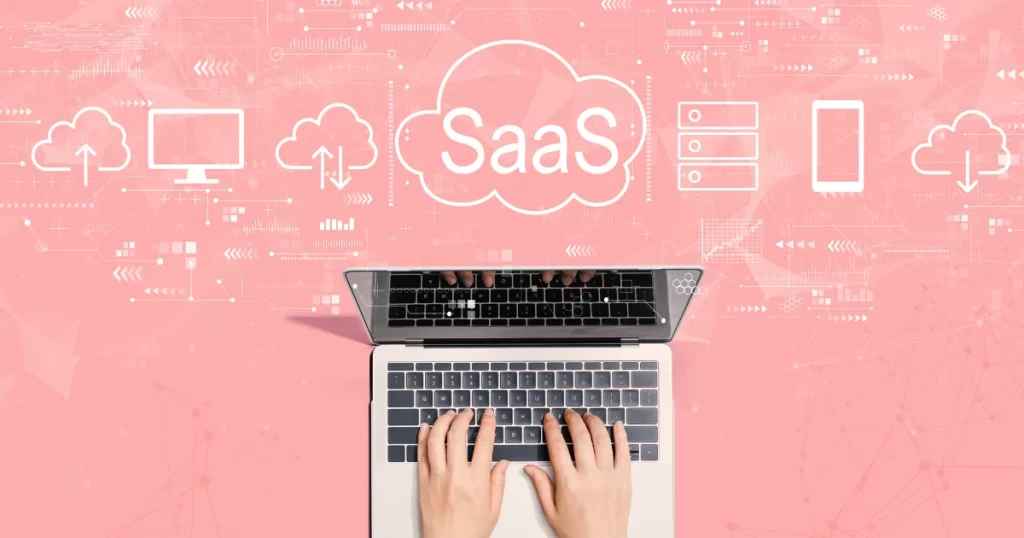
What Is SaaS Marketing Anyway?
SaaS marketing is not just about selling software—it’s about convincing your audience that subscribing to your service is a brilliant life choice. You’re selling convenience, scalability, and the promise of stress-free upgrades. Remember the days when software came in a box with a CD, and you had to beg IT to install it? SaaS marketing says, “Forget that mess—just click here, and we’ll do the rest.”
Now, let’s address the elephant in the room: B2B SaaS marketing vs. B2C SaaS marketing. B2B SaaS marketing is the art of convincing entire organizations to get on board, and it’s not for the faint-hearted. You’re dealing with decision-makers, legal teams, and—oh, joy—budget committees. The payoff? Bigger contracts, long-term relationships, and a lot more coffee to survive the process.
On the flip side, B2C SaaS marketing targets individual users. It’s faster-paced, and the messaging is often emotional rather than analytical. Your goal here is to make potential customers think, “Wow, how did I live without this?” (Answer: Probably just fine, but let’s not dwell on that.)
Customer Acquisition Strategies
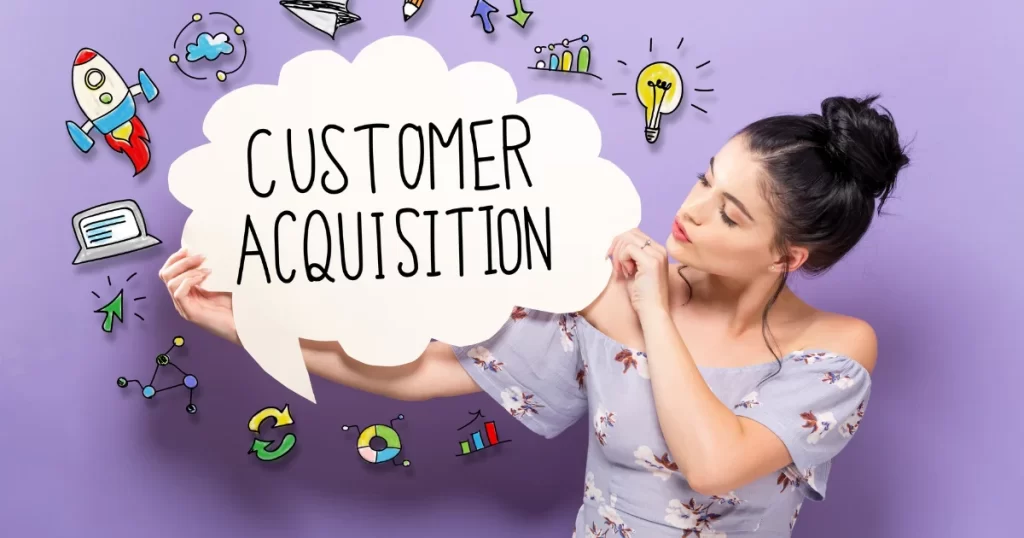
The Cost of Wooing a Customer
Let’s talk about Customer Acquisition Cost (CAC). This is the money you spend to charm a single customer into saying, “Yes, I’ll subscribe.” For SaaS companies, CAC is like fire—it’s useful, but if it’s out of control, you’ll burn your entire budget and end up crying over spreadsheets.
Here’s a visual to break it down:
Table 1: CAC Breakdown
| Expense Type | Percentage of Total CAC |
|---|---|
| Advertising | 40% |
| Sales Team | 35% |
| Tools/Platforms | 15% |
| Miscellaneous | 10% |
If your CAC exceeds your Customer Lifetime Value (LTV), you’re in trouble. It’s like spending $100 to earn $50—math that even your high school algebra teacher would frown upon.
High-Intent Keywords: The Money Makers
Forget broad keywords like “SaaS software.” Those attract window shoppers who’ll never convert. Instead, focus on high-intent keywords that target users who already have their wallets half-open. Examples include:
- “Best SaaS CRM for small businesses”
- “Top SaaS marketing automation tools”
- “Affordable SaaS project management software”
These phrases scream, “I’m ready to buy; just point me in the right direction.” Incorporate them into your PPC campaigns, blog posts, and landing pages. Watch your conversion rates soar while your competitors waste money on keywords like “software.”
Targeted Ads: Not Creepy, Just Effective
Thanks to the wonders of modern tech (and possibly a little digital sorcery), platforms like Google and LinkedIn know your ideal customer better than you do. Use this to your advantage with:
- A/B Testing: Run multiple ad variations to find the winner.
- Retargeting Ads: Follow up with visitors who left your site without converting. It’s not stalking—it’s persistence.
- Geo-Targeting: Focus your efforts on regions where your product is most likely to thrive.
Here’s the secret sauce: Don’t just highlight your product; emphasize the pain points it solves. Nobody buys a SaaS subscription because it looks cool. They buy because it saves them time, money, or a massive headache.
Freemium Models and Free Trials: The Gateway Drugs of SaaS
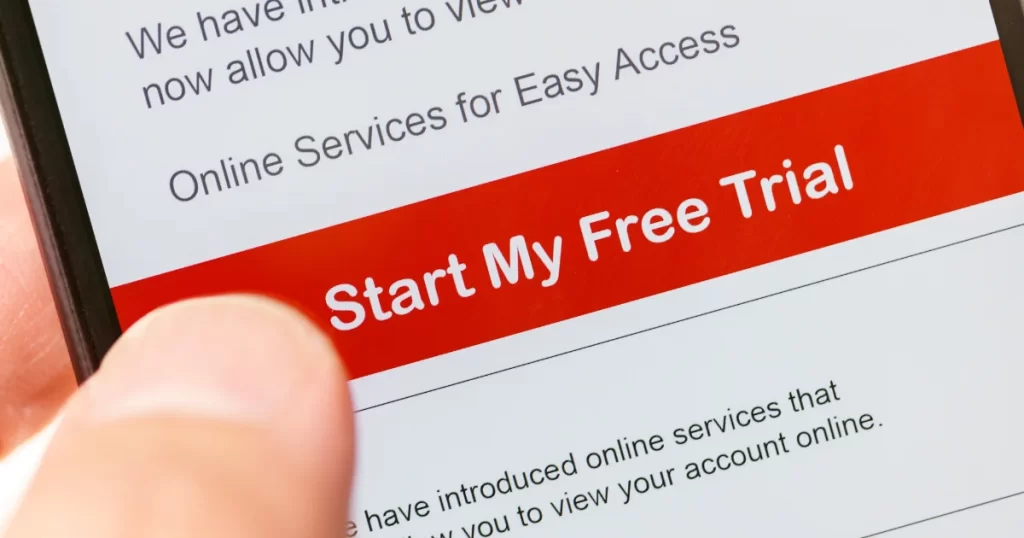
Freemium Models: Hook Them for Free, Then Reel Them In
Freemium models are the “first taste is free” strategy of SaaS marketing. The concept is simple: Offer a basic version of your product at no cost and let users fall in love with it. Eventually, they’ll hit a limitation (like storage caps or missing features) and think, “I need the premium plan.”
Why Freemium Works:
- Low Entry Barrier: Free is everyone’s favorite price.
- Trust Building: Users get to see your product’s value before committing financially.
- Viral Potential: Happy users often share free tools with colleagues or friends, giving you free advertising.
💡Pro Tip: Your free version should be genuinely useful but leave users wanting more. Think of it like a movie trailer—exciting enough to hook the audience but ending before the best part.
Free Trials: The Dating Phase of SaaS
If freemium models are the first taste, free trials are the full appetizer. A well-designed free trial gives users access to premium features for a limited time, usually 7–30 days. The goal is to make them think, “I can’t live without this,” before the trial ends.
Best Practices for Free Trials:
- No Credit Card Required: Seriously, don’t demand payment info upfront. People hate it, and they’ll ghost you faster than a bad first date.
- Onboarding Tutorials: Guide users through your product’s key features so they see the value immediately.
- Reminder Emails: Send friendly nudges as the trial period ends. Phrases like “Don’t lose your progress!” work wonders.
Content Marketing for SaaS: The Art of Subtle Brilliance
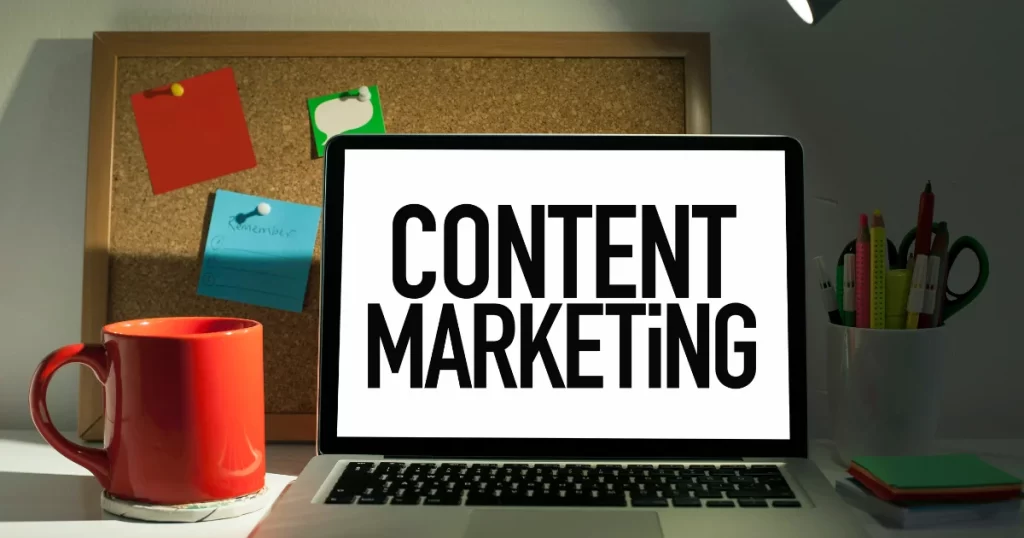
Why Content Marketing Is the Crown Jewel of SaaS Marketing
Good content marketing isn’t just a strategy—it’s your secret weapon for SaaS domination. Why? Because it builds trust, demonstrates expertise, and nudges your audience down the sales funnel without resorting to aggressive sales tactics. Instead of shouting, “Buy our software!” you’re whispering, “Here’s some free value… also, wouldn’t life be better with our product?”
But here’s the kicker: SaaS marketing content must educate and engage at the same time. Your audience isn’t interested in fluff. They want actionable insights, real-world examples, and (sometimes) a bit of sass.
Types of Content That Convert
- Blogs: Your SEO Workhorse
A well-written blog is like your SaaS product’s elevator pitch—short, impactful, and designed to make people say, “Tell me more!”- Example Blog Topics:
- “How to Cut SaaS Churn in Half Without Losing Sleep”, “The Ultimate SaaS Pricing Model Guide”, “5 SaaS Marketing Mistakes You’re Definitely Making”
- Example Blog Topics:
- eBooks: Deep Dives for the Deeply Interested
Think of eBooks as blogs on steroids. These long-form resources let you explore complex topics in detail, offering tangible value to your readers. Bonus? You can gate them behind a lead capture form to build your email list.- Popular Topics for SaaS eBooks:
- “The Complete Guide to SaaS Marketing in 2025”, “Scaling Your SaaS Business Without Breaking the Bank”, “Mastering Customer Retention: The SaaS Playbook”
- Popular Topics for SaaS eBooks:
- Webinars: Where SaaS Meets Showbiz
A webinar is your SaaS product’s time to shine. Use these live (or recorded) sessions to:- Showcase your product in action. Host expert Q&A sessions. Highlight success stories from real customers.
Table 1: Content Type vs. Marketing Goal
| Content Type | Primary Goal | Ideal Audience Stage |
|---|---|---|
| Blogs | Drive traffic, educate prospects | Awareness |
| eBooks | Capture leads, provide in-depth info | Consideration |
| Webinars | Showcase product value, build trust | Decision |
Case Studies and Social Proof: Bragging Rights (But Make It Subtle)
The Power of Social Proof
Your audience has trust issues. Blame fake news, shady marketers, or that one “too good to be true” deal they fell for last year. Whatever the cause, social proof is the cure. This could be in the form of customer testimonials, reviews, or (the gold standard) case studies.
How to Create Case Studies That Wow
A compelling case study is essentially a hero’s journey—except the hero is your SaaS product. The story arc looks like this:
- The Problem: Identify the pain points your customer faced (bonus points if it’s relatable).
- The Solution: Enter your SaaS product, stage left, solving problems like a digital superhero.
- The Results: Quantifiable outcomes like increased efficiency, reduced costs, or more sales.
💡Pro Tip: Incorporate visuals like graphs, screenshots, and before-and-after comparisons to make your case study visually appealing.
Why Video Testimonials Are the New Black
Text testimonials are fine, but let’s be real—anyone can slap a made-up quote on their site. Video testimonials, on the other hand, are harder to fake and way more persuasive. Watching a real person say, “This SaaS platform changed my life,” is infinitely more impactful than reading a sentence in Arial font.
Email Marketing Strategies for SaaS Companies

Why Email Marketing Refuses to Die
Think email marketing is outdated? Think again. Email is the cockroach of digital marketing—it survives every trend shift because it works. For SaaS companies, email marketing is a Swiss Army knife: perfect for onboarding, retaining, upselling, and everything in between.
Types of Emails Every SaaS Company Needs
- Acquisition Emails: Converting the Curious
These emails are for potential customers hovering on the edge of commitment. Your job? Give them a gentle (or not-so-gentle) nudge.- Examples:
- Limited-time offers (“Sign up in the next 24 hours and get 20% off your first month!”).
- Product teasers (“See how our SaaS solution is transforming businesses like yours.”).
- Examples:
- Retention Emails: Love Letters to Your Users
Existing customers are your bread and butter, so keep them happy. Send personalized emails that re-engage them, remind them of unused features, or offer exclusive content.- Examples:
- “We noticed you haven’t used Feature X—here’s how it can help.”
- “Exclusive webinar for our loyal users—reserve your spot now!”
- Examples:
- Newsletters: Your SaaS Story, Regularly Scheduled
Use newsletters to keep your audience updated on product updates, industry news, and tips for getting the most out of your SaaS solution. Bonus points for humor and personality.
Table 2: Email Type vs. Target Goal
| Email Type | Primary Purpose | Timing |
|---|---|---|
| Acquisition Emails | Convert leads into customers | Early in the funnel |
| Retention Emails | Re-engage and delight existing users | Mid-to-late in the funnel |
| Newsletters | Maintain awareness and loyalty | Ongoing |
Key Metrics to Monitor
If you’re not measuring, you’re guessing—and guessing doesn’t pay the bills. Here’s what to track:
- Open Rate: Are people even reading your emails?
- Click-Through Rate (CTR): Are they engaging with your content?
- Unsubscribe Rate: Are you annoying them into leaving? (Stop it.)
💡Pro Tip: A/B test your subject lines, visuals, and CTAs to optimize performance. Small tweaks can lead to big wins.
Social Media Marketing Techniques for B2B SaaS Companies

Social media marketing for SaaS marketing can feel like shouting into the void—unless you’re targeting the right people, on the right platforms, with the right content. For B2B SaaS, it’s less about viral dances and more about building trust, authority, and meaningful connections with decision-makers.
Why Social Media Matters for SaaS Marketing
Think of social media as your SaaS product’s PR agent. It helps you:
- Build Authority: Share thought leadership content that positions your brand as the go-to expert in your niche.
- Generate Leads: Use targeted ads and organic posts to attract prospects who actually care about your product.
- Engage Decision-Makers: Connect directly with CEOs, CTOs, and other acronyms who control the budget.
LinkedIn: The Holy Grail of B2B SaaS Marketing
If you’re a SaaS marketer ignoring LinkedIn, you’re leaving money on the table. Why? Because this platform is crawling with your ideal audience—professionals actively looking for solutions to their problems.
What to Post on LinkedIn:
- Thought Leadership Articles: Share actionable advice that showcases your expertise.
- Example: “5 Ways SaaS Products Can Help Cut Operational Costs in 2024.”
- Case Studies: Show how your product has transformed other businesses. Bonus points for adding visuals like charts or graphs.
- Customer Success Stories: Share testimonials and anecdotes that demonstrate your product’s value.
💡Pro Tip: Use LinkedIn polls and carousel posts to increase engagement. People love clicking things, even if it’s just to say, “No, thanks.”
Twitter: For Quick Updates and Conversations
Twitter might seem like a strange choice for B2B SaaS, but it’s a great place for quick updates, engaging in industry conversations, and building brand personality.
What to Tweet:
- Product updates.
- Insights from industry reports.
- Snippets from blog posts or webinars with links to read/watch more.
💡 Pro Tip: Use hashtags sparingly. You’re not trying to trend; you’re trying to connect.
Social Media Metrics That Matter
It’s not about likes—it’s about leads. Track these metrics to ensure your SaaS social media strategy is working:
- Engagement Rate: Are people interacting with your content?
- Click-Through Rate (CTR): Are they visiting your site?
- Conversion Rate: Are social leads becoming paying customers?
Table 1: Best Social Media Platforms for B2B SaaS Marketing
| Platform | Primary Audience | Best Content Types |
|---|---|---|
| Decision-makers (B2B) | Thought leadership, case studies, ads | |
| Industry professionals | Quick updates, conversations | |
| General professionals | Community groups, targeted ads |
Pricing Strategies for Software as a Service Products

Pricing your SaaS product isn’t about throwing numbers at a wall and seeing what sticks (although some companies try). It’s about balancing perceived value with accessibility while keeping profitability in mind.
Common SaaS Pricing Models
- Tiered Pricing
The most popular option in SaaS marketing, tiered pricing offers multiple plans to cater to different customer needs. Think of it as “choose your own adventure,” but with software.- Example Tiers:
- Basic: Limited features for solo users or small teams.
- Pro: Advanced tools for growing businesses.
- Enterprise: Fully customizable for large organizations.
- Example Tiers:
- Freemium Model
Give away a basic version of your product for free, then charge for premium features. It’s like offering a free taste of cake and charging for the frosting (and who doesn’t want frosting?). - Pay-As-You-Go
Customers pay based on usage—ideal for SaaS products with variable user demand, like cloud storage or email marketing platforms.
Example SaaS Pricing Table
| Tier | Features | Price |
|---|---|---|
| Basic | Limited users, core features | $10/month |
| Pro | Unlimited users, advanced tools | $50/month |
| Enterprise | Custom features, priority support | Custom Pricing |
💡Pro Tip: Highlight your most popular tier (usually “Pro”) on your pricing page to guide customer choices.
What to Consider When Setting Prices
- Value Proposition: Does your pricing reflect the perceived value of your product?
- Competitor Analysis: Are your prices competitive within your niche?
- Customer Segmentation: Do you have tiers or plans that appeal to different buyer personas?
Table 2: Common SaaS Pricing Pitfalls
| Pitfall | Impact | Solution |
|---|---|---|
| Underpricing | Reduced perceived value | Highlight ROI with case studies |
| Overcomplicating Tiers | Confused customers, fewer signups | Stick to 3–4 clear tiers |
| Ignoring Customer Feedback | Missed opportunities for improvement | Regular surveys and user interviews |
Enhancing User Experience (UX) in SaaS Product Marketing
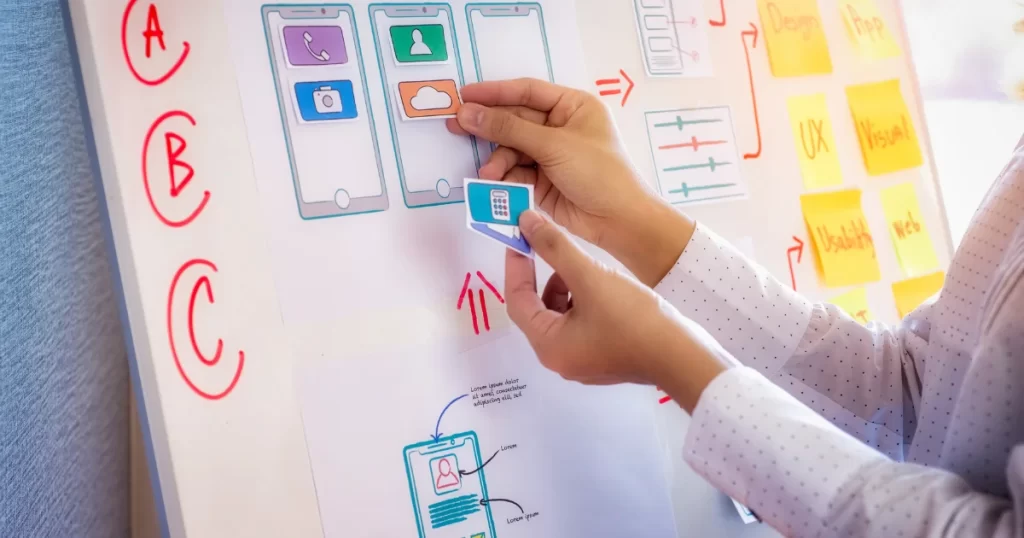
Great UX is the silent MVP of SaaS marketing. If your product is clunky, confusing, or slow, your customers won’t stick around—no matter how great your marketing is.
Key UX Factors
- Mobile Optimization
Half of your audience is visiting your site on their phone. If your SaaS product looks like a Tetris board on mobile, you’re done. - Site Speed
Nobody has time for a slow-loading page. A one-second delay can tank conversion rates by 7%. - Clear Navigation
If users need a map and flashlight to find your CTA button, you’ve already lost them. - Onboarding Experience
The first interaction with your product should feel like opening a gift, not assembling IKEA furniture.
UX Checklist for SaaS Websites
| Factor | Why It Matters | How to Improve It |
|---|---|---|
| Mobile Optimization | Half of web traffic is mobile | Use responsive design |
| Load Speed | Faster sites = better conversions | Optimize images, use caching |
| Simplicity | Confusion kills conversions | Clear CTAs, simple navigation |
| Onboarding Flow | First impressions count | Use tooltips, interactive tutorials |
💡Pro Tip: Regularly test your UX with real users. Fresh eyes spot problems your team might miss.
With stellar UX, smart pricing strategies, and targeted social media tactics, your SaaS marketing efforts can move from “meh” to “wow” faster than you can say, “conversion rate.”
Analytics and Metrics Monitoring in SaaS Marketing Campaigns

If you’re not tracking your SaaS marketing campaigns, you’re essentially running through a maze blindfolded, hoping for the best. Spoiler alert: that’s not a winning strategy. The key to effective marketing isn’t just doing—it’s measuring what you’ve done, seeing what worked (and what flopped), and pivoting like your SaaS depends on it. Because it does.
The Metrics That Matter
Monthly Recurring Revenue (MRR)
MRR is the heartbeat of any SaaS business. It tracks the predictable, recurring revenue your company earns every month. If your MRR isn’t growing, you’ve got a problem bigger than your marketing budget.
- How to Calculate: Add up all monthly subscription revenue.
- Why It’s Critical: It helps gauge overall business health and shows how effective your pricing and customer retention strategies are.
Customer Lifetime Value (LTV)
LTV isn’t just a number—it’s a love letter from your most loyal customers. This metric predicts the total revenue a customer will generate during their entire relationship with your brand.
- How to Calculate: Multiply Average Revenue Per User (ARPU) by Customer Lifetime (in months or years).
- Why It’s Critical: A high LTV means your customers are sticking around, loving your product, and (hopefully) telling their friends about it.
Churn Rate
Churn is the silent killer of SaaS dreams. It measures the percentage of customers who cancel their subscriptions over a given period.
- How to Calculate: Divide the number of customers lost in a month by the total number of customers at the start of the month, then multiply by 100.
- Why It’s Critical: Even a small increase in churn can wipe out MRR growth, leaving your marketing team scrambling to make up the difference.
Activation Rate
Activation rate tracks how many users complete the initial steps to experience your product’s value. Think of it as the difference between “Oh, cool” and “Take my money!”
- How to Improve:
- Streamline your onboarding process.
- Add interactive walkthroughs or tutorials.
- Offer quick wins, like templates or pre-loaded features, to help users see immediate value.
Table 1: Key SaaS Marketing Metrics
| Metric | What It Measures | Why It’s Important |
|---|---|---|
| MRR | Monthly recurring revenue | Predicts steady income and business growth |
| LTV | Customer lifetime value | Measures profitability of long-term customers |
| Churn Rate | Customer retention | Indicates product or service satisfaction |
| Activation Rate | Early product engagement | Highlights onboarding and initial experience |
Challenges in B2B SaaS Marketing and How to Overcome Them

Marketing SaaS to businesses is like selling sand at the beach: the market is crowded, and everyone thinks their sandcastle is the best. To succeed, you’ll need to overcome some gnarly hurdles.
Challenge 1: Cutthroat Competition
The SaaS space is a battlefield. Competitors are launching new features weekly, and you’re fighting for the same pool of customers.
How to Win:
- Differentiate: Find your niche and own it. Highlight what sets your SaaS apart—be it a unique feature, superior support, or exceptional user experience.
- Offer Value Upfront: Free trials and freemium tiers aren’t just nice-to-haves; they’re table stakes. Get potential customers hooked early.
Challenge 2: Glacial Decision-Making
B2B sales cycles are slow, mostly because decisions involve multiple stakeholders, lengthy approvals, and someone named Bob who’s always out of office.
How to Win:
- Build Relationships: Use social media, webinars, and thought leadership content to stay top-of-mind with prospects.
- Provide ROI Data: Show hard numbers that justify the cost of your SaaS. Create ROI calculators or detailed case studies tailored to specific industries.
Challenge 3: Skepticism
Nobody trusts marketers. Harsh, but true. In B2B SaaS, decision-makers often approach your product with a mix of interest and suspicion.
How to Win:
- Leverage Social Proof: Feature testimonials, video case studies, and user reviews prominently on your website.
- Be Transparent: Share pricing upfront and explain features clearly. Avoid the dreaded “Contact us for a quote” unless you want prospects to bail.
Future Trends in SaaS Marketing Beyond 2025
The future of SaaS marketing isn’t just shiny—it’s sci-fi level.
Trend 1: AI-Powered Everything
Artificial intelligence is already reshaping SaaS marketing, and by 2025, it’ll be the norm. Think hyper-personalized email campaigns, predictive analytics, and chatbots that feel eerily human (but without the attitude).
Examples:
- AI-driven segmentation to send the right message to the right person at the right time.
- Chatbots that provide instant, intelligent customer support—24/7.
Trend 2: Marketing Automation on Steroids
Marketing automation tools will evolve to the point where they practically market for you. Expect campaigns that adapt in real-time based on user behavior.
- Scenario: A user browses your pricing page but doesn’t sign up. Automation kicks in with a perfectly timed email offering a discount or demo.
Trend 3: Interactive Content
Static PDFs are out; interactive, engaging content is in. Future prospects will expect personalized, interactive experiences from your marketing efforts.
Examples:
- Dynamic case studies tailored to the user’s industry.
- ROI calculators embedded in your website or email campaigns.
Conclusion
Mastering SaaS marketing isn’t for the faint of heart—it’s for the scrappy, the clever, and the caffeinated. From mastering analytics to navigating the treacherous waters of B2B sales, every move you make has to be deliberate and data-driven.
The future of SaaS is exciting, intimidating, and full of opportunities for marketers willing to innovate. Whether you’re leveraging AI to personalize campaigns, obsessing over churn rates, or simply trying to make pricing sexy, the golden rule remains the same: solve problems first, sell second.
And remember, in SaaS marketing, humor helps. Because if you can’t make someone laugh while convincing them to buy your product, are you even marketing?

